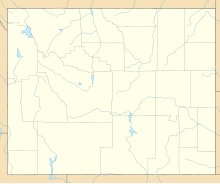Mount Everts
| Mount Everts | |
|---|---|

Aerial view of Mount Everts
|
|
| Highest point | |
| Elevation | 7,846 ft (2,391 m) NAVD 88 |
| Coordinates | 44°58′30″N 110°39′41″W / 44.97500°N 110.66139°WCoordinates: 44°58′30″N 110°39′41″W / 44.97500°N 110.66139°W |
| Geography | |
|
|
|
| Parent range | Gallatin Range |
| Topo map | USGS Mammoth |
Mount Everts el. 7,846 feet (2,391 m) is a prominent mountain peak in Yellowstone National Park, Wyoming near Mammoth Hot Springs. The peak was named for Truman C. Everts, a member of the Washburn–Langford–Doane Expedition of 1870. Mount Everts is located immediately due south of Gardiner, Montana and due east of Mammoth Hot Springs.
Mount Everts was named by Henry D. Washburn shortly after the rescue of Truman C. Everts, who had been lost for 37 days in Yellowstone at the conclusion of the Washburn Expedition. During the expedition, Washburn named a peak (now called Mount Sheridan ) in the Thorofare region south of Yellowstone Lake for Everts but later changed it to the current peak, believing it was very near the location of Everts' rescue. Everts was in fact rescued a few miles to the northeast, near where Blacktail Deer Creek enters the Yellowstone River at the northern park boundary, and the mountain is the dominant feature separating what is now known as Gardiner from the northerly flowing Yellowstone River. Mr. Everts complained until his death that the far more grand Mount Sheridan should have been named after him.
The majority of Mt. Everts is made of Cretaceous era sediments. The Cretaceous Interior Seaway deposited sediments across North America from 120-70 million years ago. The first of these deposits in the Yellowstone region was the Telegraph Creek formation (100 mya) and is predominantly shale. The Eagle formation (75 mya) is dominated by sandstone and was deposited in shallower water along deltas and beaches. The Everts formation (70 mya) is dominated by sandstone and has coal seams from plant debris that collected in swampy areas.
There are no rocks on Mt. Everts from 65 to 2.1 million years ago. The absence of rocks is called an unconformity. During this period few or no rocks were deposited, and erosion carried away any sediments that were deposited.
...
Wikipedia

